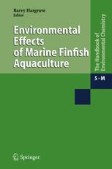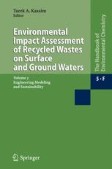Search
Search Results
-
Mediterranean Sea and Humans: Improving a Conflictual Partnership
Intense human activities in regions surrounding enclosed and semi-enclosed seas such as the Mediterranean produce, in the long range, a strong...
-
The Mediterranean Mercury Anomaly, a Geochemical or a BiologocalIssue
This chapter deals with the distribution and speciation of mercury in the water column, sediment and biota of both the Western and Eastern Basins of...
-
Satellite Observations as Indicators of the Mediterranean Sea’s Health
Satellite observations of the marine environment allow the assessment of optical, thermal and structural properties, which can be inferred from the...
-
Nutrient, Oxygen and Carbon Ratios, CO2 Sequestrationand Anthropogenic Forcing in the Mediterranean Sea
The climate and the environment, together with present tectonic morphology, constitute main constraints for the Mediterranean Sea geochemistry. The...
-
Assessing Nitrogen Carrying Capacity for Blue Hill Bay, Maine: A Management Case History
As net-pen aquaculture in coastal waters grows, regulatory agencies must consider the potential for localized eutrophication. To avoid excessive...
-
River Inputs of Metals and Arsenic
This chapter deals with the inputs of dissolved heavy metals and arsenic by rivers to the Mediterranean Sea. It is divided into three parts. The...
-
Organic Chemicals in Groundwater: Modeling Fate and Transport
Hazardous organic chemical waste that has been placed in landfills or recycled for use as highway construction and repair materials has the potential...
-
Input of Various Chemicals Transported by Saharan Dust and Depositing atthe Sea Surface in the Mediterranean Sea
This paper reviews work on the role of Saharan dust as a contribution of various chemicals to the Mediterranean basin. Both the magnitude and the...
-
Beneficial Reuses of Scrap Tires in Hydraulic Engineering
Scrap tires are a high-profile waste material. There are serious concerns over the ever-mounting scrap tire problem. A need exists for increasing...
-
Nonaqueous Phase Liquid Pool Dissolution in Subsurface Formations
The objective of this chapter is to present some recent developments on nonaqueous phase liquid (NAPL) pool dissolution in water saturated subsurface...
-
Mathematical Methods for Hydrologic Inversion: The Case of Pollution Source Identification
The reliable assessment of hazards or risks arising from groundwater contamination problems and the design of efficient and effective techniques to...
-
The Suitability of Electrode Measurements for Assessment of Benthic Organic Impact and Their use in a Management System for Marine Fish Farms
A management system for marine fish farms in Norway has recommended the use of simple electrode measurements of redox potentials (E...
-
The Tail of Two Rivers in Tasmania: The Derwent and Huon Estuaries
The Derwent and Huon Rivers are two relatively small river systems in the southeast of Tasmania (Australia). They terminate in estuaries that are...
-
The Sacca di Goro Lagoon and an Arm of the Po River
The Po di Volano canal–Sacca di Goro lagoon is a small hydrographic system partially located in the southern part of the Po River Delta. The total...
-
Pesticides in the Great Lakes
Pesticides have been widely and heavily used in agriculture in the Great Lakes Basin (approximately 93000 tons were used in 1995 alone). Herbicides...
-
Early Warning Strategies and Practices Along the River Rhine
In 1986, the International Commission for the Protection of the Rhine (ICPR) installed a Warning and Alarm Plan (WAP) in order to avert the dangers...
-
Degradation and Preservation of Organic Matter in Marine Sediments
Organic matter that is deposited in aquatic sediments is subject to an intense diagenetic reactor that determines how much organic carbon is...
-
Present Status of Antifouling Systems in Japan: Tributyltin Substitutes in Japan
An international conference held by the International Maritime Organization in October 2001 adopted an “International convention on the control of...
-
Assessment of Organic Compounds in the Rhine Estuary
Over the past centuries the Rhine estuary has changed from a natural, hardly disturbed estuary into an anthropogenetically influenced area that...
-
Geochemistry of the Amazon Estuary
The Amazon River supplies more freshwater to the ocean than any other river in the world. This enormous volume of freshwater forces the estuarine...
